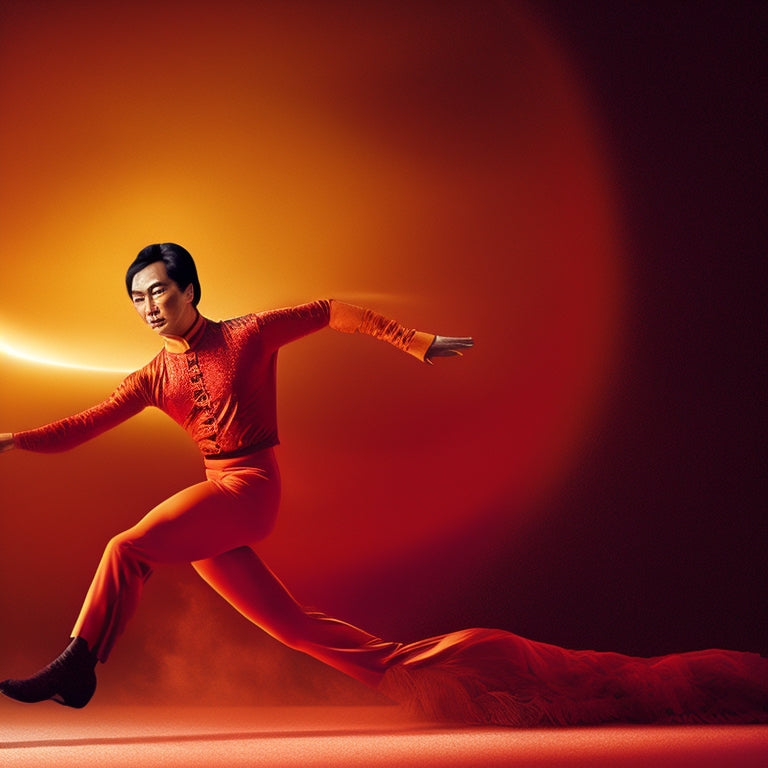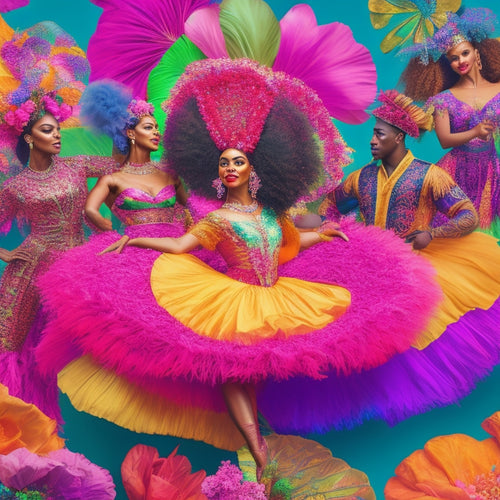
Captivating Insights: Maos Last Dancer Analysis
Share
Li Cunxin's memoir, Mao's Last Dancer, is a compelling narrative that delves into the intersection of art, identity, and politics, offering profound insights into the human experience. The memoir showcases Li's transformative journey from a poverty-stricken village to international fame, traversing cultural boundaries and artistic expression. Themes of freedom, oppression, cultural exchange, and identity are interwoven throughout the narrative, highlighting the tension between individual aspiration and collective ideology. As Li's story unfolds, carefully selected quotes illuminate his journey, making his struggles and triumphs relatable and poignant. Explore the complexities of Li's world, and uncover the rich tapestry of his experiences.
Key Takeaways
• Li Cunxin's journey in Mao's Last Dancer showcases the transformative power of art and the human spirit amidst poverty and oppression.
• The novel explores themes of freedom, oppression, cultural exchange, and identity, highlighting the tension between individual aspiration and collective ideology.
• Cultural exchange is a significant aspect of the story, as Li navigates between Chinese norms and the US cultural landscape, grappling with identity struggles.
• Quotes in the novel provide emotional insights into Li's transformative journey, humanizing his struggles and triumphs, and offering a deeper understanding of his experiences.
• The story emphasizes individual freedom and artistic expression amidst political upheaval, highlighting the complexities of cultural identity and personal growth.
Unraveling Li's Journey
Li Cunxin's incredible journey, which spans his humble beginnings in rural China to his triumphant rise as a world-renowned ballet dancer, is a confirmation of the transformative power of art and the human spirit.
Through his story, we witness a remarkable path of personal growth, as he navigates the complexities of cultural identity and artistic expression.
From his early days in a poverty-stricken village to his defection to the United States, Li's journey is a poignant exploration of the human experience.
His pursuit of artistic passion, despite the obstacles, exemplifies the liberating power of art, which enables him to transcend borders and cultural boundaries.
As we explore Li's journey, we uncover a rich tapestry of personal growth, artistic expression, and the unbridled human spirit.
Themes and Cultural Context
The themes of freedom, oppression, cultural exchange, and identity permeate Mao's Last Dancer, set against the backdrop of China's Cultural Revolution and the United States' cultural melting pot. This cultural context allows for a nuanced exploration of Li Cunxin's personal growth, as he navigates the complexities of East meets West.
-
The novel highlights the tension between individual aspiration and collective ideology, as Li struggles to reconcile his artistic passion with the communist regime's expectations.
-
Cultural exchange is a recurring motif, as Li's journey takes him from China's rigid cultural norms to the United States' diverse cultural landscape.
-
The theme of identity is central, as Li grapples with his sense of self amidst the conflicting demands of his Chinese heritage and American surroundings.
- Through Li's story, the novel sheds light on the human cost of political upheaval, emphasizing the importance of individual freedom and artistic expression.
Quotes and Reflections
In addition, Mao's Last Dancer offers a window into Li Cunxin's transformative journey through a careful selection of quotes, illuminating the intersections of art, identity, and politics. These quotes not only provide insight into Li's character development but also evoke a profound emotional impact on the reader.
For instance, Li's reflection on his first encounter with ballet, 'I had never seen anything so beautiful,' showcases his initial fascination with the art form. Such quotes humanize Li, making his struggles and triumphs more relatable and poignant.
Moreover, they underscore the novel's themes, such as the pursuit of artistic passion and the tension between individuality and cultural heritage. By examining these quotes, readers can gain a deeper understanding of Li's experiences and the cultural context in which he navigated his way.
Frequently Asked Questions
How Did Li Cunxin's Childhood in Rural China Shape His Ballet Career?
Li Cunxin's childhood in rural China, marked by cultural roots in village life, rural poverty, and a communist upbringing, shaped his ballet career by instilling resilience, discipline, and a strong work ethic, laying the foundation for his future success.
What Inspired Li Cunxin to Defect From China During the 1980s?
"Like a bird escaping a gilded cage, Li Cunxin's desire for Cultural Freedom and Political Asylum fueled his defection from China in the 1980s, amidst International Tensions and Ideological Conflict, as he navigated treacherous Border Crossings to pursue his artistic passion."
How Did Li Cunxin's Experiences Influence His Views on Communism?
Li Cunxin's experiences led to a Cultural Awakening, prompting an Ideological Shift, as he grappled with the harsh realities of communism, ultimately rejecting its ideologies and embracing individual freedom and artistic expression.
What Role Did Ben Stevenson Play in Li Cunxin's Ballet Success?
Ben Stevenson, a renowned ballet master, played a pivotal role in Li Cunxin's success, offering mentorship and artistic guidance that bridged cultural divides, fostering a unique ballet diplomacy that transcended borders and ideologies.
How Did Li Cunxin's Transition to Finance Impact His Artistic Passions?
Li Cunxin's shift to finance initially stifled his artistic passions, sacrificing creative freedom for financial security. However, this career change ultimately allowed him to rediscover his love for ballet, ensuring a harmonious balance between financial stability and artistic expression.
Related Posts
-

Long-Lasting Dance Makeup: Tips for a Flawless Finish
To achieve a long-lasting dance makeup look, start by preparing your skin through cleansing, moisturizing, and exfoli...
-

Newspaper Headline: Access Engaging Social Media Assets Privately
In today's digital landscape, crafting an engaging online presence requires a strategic balance between providing all...
-

Dance Dress Code: Unleash Your Style
A dance dress code that prioritizes functionality and technical precision can often stifle dancers' ability to expres...


